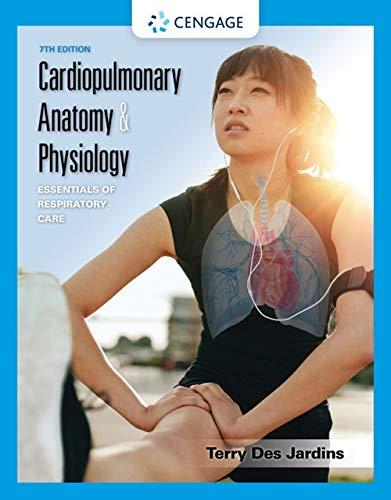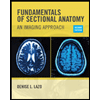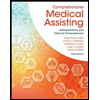
Introduction:
The ventilation-perfusion
The pressure of carbon dioxide and oxygen at the capillary end is same as the alveolar end in lungs, that is,
Answer to Problem 3RQ
Correct answer:
1, 2, 3, and 4
Explanation of Solution
Justification/ Explanation for the correct answer:
Option (d) is given that when the
Similarly, as the ventilation rate of the alveoli decreases, the oxygen pressure inside the alveoli also decreases. Thus, the
Explanation for the incorrect answer:
Option (a) is given that when the
Option (b) is given that when the
Option (c) is given that when the
Hence, options (a), (b), and (c) are incorrect.
The ventilation-perfusion rate differs throughout the lungs. The decrease in the
Want to see more full solutions like this?
Chapter 8 Solutions
Cardiopulmonary Anatomy & Physiology
- 4. The number of alveoli continues to increase until about A. 6 years of age B. 8 years of age C. 10 years of age D. 12 years of agearrow_forwardThe residual volume/total lung capacity ratio in healthy men ages 20 to 30 years is A. 15% B. 20% C. 25% D. 30%arrow_forwardJim Bob Pharmaceuticals is testing a new anti-coughing drug, "Maplex". In 400 volunteers who took Maplex, 250 said they coughed less. Does this prove that Maplex is an effective anti-coughing drug? A. Not yet. We need to see whether the same percent of volunteers who took a placebo also report coughing B. There is no way to either prove or disprove that Maplex reduces coughing C. Yesarrow_forward
- 5. With advancing age, the 1. Paco2 increases 2. PaO2 decreases 3. decreases 4. decreases A. 1 only B. 2 only C. 3 and 4 only D. 2 and 4 onlyarrow_forward3. With advancing age, the 1. Lung compliance decreases 2. Chest wall compliance increases 3. Lung compliance increases 4. Chest wall compliance decreases A. 2 only B. 3 only C. 1 and 2 only D. 3 and 4 onlyarrow_forwardIn an obstructive lung disorder, the 1. FRC is decreased 2. RV is increased 3. VC is decreased 4. IRV is increased A. 1 and 3 only B. 2 and 3 only C. 2 and 4 only D. 2,3 and 4 onlyarrow_forward
- 3. During acute alveolar hyperventilation, the blood 1. increases 2. decreases 3. increases 4. pH decreases A. 2 only B. 4 only C. 1 and 3 only D. 2 and 4 onlyarrow_forwardThe MVV in normal healthy men ages 20 to 30 years is A. 60 L/min B. 100 L/min C. 170 L/min D. 240 L/minarrow_forward1. During acute alveolar hypoventilation, the blood 1. increases 2. pH increases 3. increases 4. increases A. 2 only B. 4 only C. 2 and 3 only D. 1,3, and 4 onlyarrow_forward
- 2. In the healthy individual in the upright position, the 1. V/Q ratio is highest in the lower lung regions 2. is lowest in the upper lung regions 3. V/Q ratio is lowest in the upper lung regions 4. is highest in the lower lung regions A. 1 only B. 2 only C. 4 only D. 3 and 4 onlyarrow_forward3. In the normal individual in the upright position 1. the negative pleural pressure is greater (i. e., more negative) in the upper lung regions. 2. the alveoli in the lower lung regions are larger than the alveoli in the upper lung regions. 3. ventilation is more effective in the lower lung regions. 4. the pleural pressure is always below atmospheric pressure during a normal ventilator cycle. A. 1 and 2 only B. 2 and 3 only C. 2,3 and 4 only D. 1,3, and 4 onlyarrow_forward
 Cardiopulmonary Anatomy & PhysiologyBiologyISBN:9781337794909Author:Des Jardins, Terry.Publisher:Cengage Learning,Basic Clinical Lab Competencies for Respiratory C...NursingISBN:9781285244662Author:WhitePublisher:Cengage
Cardiopulmonary Anatomy & PhysiologyBiologyISBN:9781337794909Author:Des Jardins, Terry.Publisher:Cengage Learning,Basic Clinical Lab Competencies for Respiratory C...NursingISBN:9781285244662Author:WhitePublisher:Cengage Fundamentals of Sectional Anatomy: An Imaging App...BiologyISBN:9781133960867Author:Denise L. LazoPublisher:Cengage LearningCase Studies In Health Information ManagementBiologyISBN:9781337676908Author:SCHNERINGPublisher:Cengage
Fundamentals of Sectional Anatomy: An Imaging App...BiologyISBN:9781133960867Author:Denise L. LazoPublisher:Cengage LearningCase Studies In Health Information ManagementBiologyISBN:9781337676908Author:SCHNERINGPublisher:Cengage Comprehensive Medical Assisting: Administrative a...NursingISBN:9781305964792Author:Wilburta Q. Lindh, Carol D. Tamparo, Barbara M. Dahl, Julie Morris, Cindy CorreaPublisher:Cengage Learning
Comprehensive Medical Assisting: Administrative a...NursingISBN:9781305964792Author:Wilburta Q. Lindh, Carol D. Tamparo, Barbara M. Dahl, Julie Morris, Cindy CorreaPublisher:Cengage Learning





